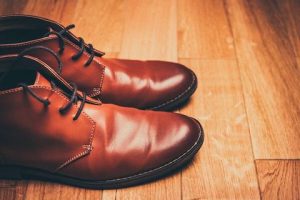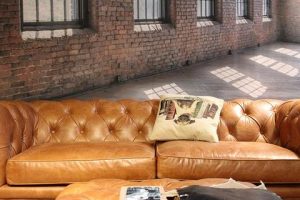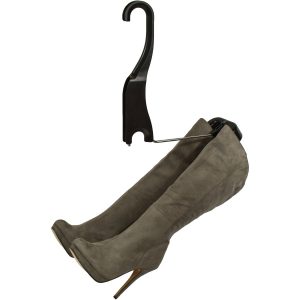 Life is like a box of chocolates, Forrest Gump (and many others) famously said. And sometimes that chocolate gets all over your leather couch. Or Purse. Or shoes. Maybe it’s not chocolate — maybe it’s a grease stain on a delicious cheesy pizza.
Life is like a box of chocolates, Forrest Gump (and many others) famously said. And sometimes that chocolate gets all over your leather couch. Or Purse. Or shoes. Maybe it’s not chocolate — maybe it’s a grease stain on a delicious cheesy pizza.
Or maybe your beautiful new suede shoes are blue because the lawn turned out to be way muddier than you thought. We are here to help, and get your leather and suede items looking gorgeous again.
A good general rule of thumb is to treat the stains as soon as they happen. But there are also ways of dealing with stains that have been set in for a while, and we’ll deal with those as well. We’ll offer various methods for various stains so that you can pick and choose a solution based on the ingredients and materials you already have in your home.
Note: We’ll deal with finished leather first, then move onto suede and distressed leather. The difference between each:
- Finished Leather looks polished and shiny;
- Suede is much more delicate. It has a nappy, soft finish;
- Distressed Leather has a pebbled look; it’s course to the touch.
Oil and Grease Stains
 You don’t have to be a mechanic to encounter oily stains on your leather goods. Anything from eye makeup remover to baby oil to the aforementioned pizza grease will leave unsightly marks.
You don’t have to be a mechanic to encounter oily stains on your leather goods. Anything from eye makeup remover to baby oil to the aforementioned pizza grease will leave unsightly marks.
Here’s what to do:
Grab cornstarch and sprinkle it over liberally all across the spill. Let that sit overnight if possible. The starch will soak up the grease, and you can wipe or sweep or shake off the residue in the morning.
If you don’t have cornstarch, or the above didn’t work, get some white tissue paper and an iron. Place the tissue paper over the spill. Put your iron on warm (not hot, as that may damage the leather) and slowly press the iron onto the tissue paper. You’ll notice the grease start to lift up into the tissue paper.
If you don’t have tissue paper and don’t want to waste time running out to buy some, use a clean sheet of white paper. Don’t use colored paper or paper that’s been written on, as you may transfer the ink or color onto the leather. Same goes for a newspaper; you don’t want the ink to transfer onto the leather so steer clear.
Bonus tip: The iron and paper trick works great for getting out melted wax and wax stains. Do this method slowly, and you’ll see the wax lift up into the paper, which you’ll then discard.
Baby powder or talcum powder is another good way to lift up grease/oil stains. Follow the same application as above: Sprinkle it generously over the spill and let it sit for at least a few hours so that the powder can soak up the liquid. Then, put a couple drops of dishwashing liquid onto the baby powder, and spread that around so that it mixes with baby powder (use more dishwashing liquid if you need to; the idea is to form a paste).
Rub the mixture gently either with a clean rag, cotton balls, or your fingertips. Do this for a few minutes, depending on how deeply set the stain is. To remove the paste, use a slightly damp rag, or crumple up some tissue paper and wipe off the leather. Go the same direction when you’re wiping — meaning that if you start at the top and go down, do that for the entire time you’re wiping off the paste. That’s so that the grain of the leather gets nice and clean and shiny.
If you don’t have any powder at home, reach for regular dishwashing liquid (not dishwasher soap). Pour a couple drops directly onto the stain. Rub gently; keep rubbing until you see the stain start to dissipate. Use more soap if the stain is larger. Leave the soap to sit for a bit; remove with paper towels or tissue paper. Repeat if needed.
Water Stains
 If you accidentally set down a mug full of steaming coffee or tea directly onto your leather couch or tabletop without a coaster, you’ll notice a white stain that matches the mug’s dimensions. That’s caused by condensation, and in this case, we’re going to do the equivalent of fighting fire with fire — we’re going to fight water with water.
If you accidentally set down a mug full of steaming coffee or tea directly onto your leather couch or tabletop without a coaster, you’ll notice a white stain that matches the mug’s dimensions. That’s caused by condensation, and in this case, we’re going to do the equivalent of fighting fire with fire — we’re going to fight water with water.
Get a bowl of room temperature water and a clean cotton rag. Dip the rag into the water, wring it out, and then apply it to stain. Keep moving the rag outward till you reach the edges of the thing you’re cleaning — if it’s a tabletop, go till you reach the edges; if it’s a couch cushion, do this to the edge of the couch. What you’re doing is getting that stain just wet enough that the stain is released AND simultaneously getting the rest of the leather damp so that it can dry at a uniform pace.
Once you’ve done this, it’s important to condition the leather so that it remains soft and supple.
Ink Marks
Marks from pens and markers can be tricky. If they’re small enough, you can dip some rubbing alcohol onto a q-tip (not too much!) and very gently dab at the stain. Dab, dab, dab until the stain lifts.  Then, give the spot a quick wipe with a damp rag, and once that’s dry, a condition that spot, and then the entire product. Alcohol is very drying, so the conditioning part is extra important, otherwise, you’ll have a weird dry-looking spot where the ink once was.
Then, give the spot a quick wipe with a damp rag, and once that’s dry, a condition that spot, and then the entire product. Alcohol is very drying, so the conditioning part is extra important, otherwise, you’ll have a weird dry-looking spot where the ink once was.
If the spot is large, it’s best to let the professionals step in. Take the item to your local cleaner, and see what s/he thinks and if they’re confident they can remove the mark without doing damage to the leather.
Animal Stains
 Not that your animal would ever misbehave, right? But if it happens, deal with right away. Baby and dog urine can be removed with dishwashing liquid; if you have a dog you no doubt have Nature’s Miracle on hand already, so use that.
Not that your animal would ever misbehave, right? But if it happens, deal with right away. Baby and dog urine can be removed with dishwashing liquid; if you have a dog you no doubt have Nature’s Miracle on hand already, so use that.
Cat urine can be more troublesome, and can, unfortunately, ruin the leather. Try dishwashing liquid and water and/or Nature’s Miracle at first. If that doesn’t work, you’ll need to take the item into a dry cleaner.
Salt Stains
If they’re not too deep and relatively fresh, a damp cotton cloth can remove these. For deeper stains, use a mixture of equal parts white vinegar and water; dab that onto the stain until it lifts.
General Stains, Including Mud
Leather soaps are great for general stains and spots. Follow the directions on the product; you can also use the above-mentioned dishwashing liquid soap and water method as well.
Suede
Suede is gorgeous! It’s also very much its own animal when it comes to cleaning and care.
Head to our How to Clean, Protect, Wear & Store Suede to get loads of tips and information on how to deal with this particular material.
Distressed Leather
We have an entire blog post devoted to distressed leather, so check out How To Take Care Of Your Distressed Leather to find out how to deal with and also care for this particular type of leather.
Condition and Protect
The leather of any kind is a special material. Take some time for the following steps on products that are new (before you begin using them) and also on products that you’ve just cleaned. It’ll revitalize the leather and protect it for future use.
You can buy leather conditioning creams, or use items that you may already have in your kitchen, such as olive oil. Rub the product onto the leather with a clean cotton rag. Pay extra attention to the seams – and place the leather either ends or joins with another part of your boot or shoe or a different type of material. Let the material sit for at least 10 minutes, and see if it’s been thoroughly absorbed. If it has, repeat the above step. You’ll see how “thirsty” the leather is by how quickly it drinks up the product. Once it stops drinking, you’ll know that you’ve conditioned enough. Wipe the excess off with a clean rag and admire your handiwork.
Pay extra attention to the seams – and place the leather either ends or joins with another part of your boot or shoe or a different type of material. Let the material sit for at least 10 minutes, and see if it’s been thoroughly absorbed. If it has, repeat the above step. You’ll see how “thirsty” the leather is by how quickly it drinks up the product. Once it stops drinking, you’ll know that you’ve conditioned enough. Wipe the excess off with a clean rag and admire your handiwork.
Some commercial creams have waterproofing agents built into them. You can also buy waterproofing sprays or creams, and that’s a great idea to protect from future stains and spills.
Proper Storage
For boot lovers, taking care of leather isn’t only about stains. The way you store your boots will have a significant impact on their longevity and appearance. Our Hanging Boot Rack stores leather boots properly, preventing creasing and keeping them organized. So, if you want to keep your leather boots looking new and extend their life, invest in the right storage solution. Happy wearing!



I tried to remove a ink stain..very small dots, with nail polish remover( a suggestion from internet) now on my beige chair I have 3 dots of ink and a light stain from the remover..I cried.. the beige leather feels rough to touch like skin and is real leather..please help!!!